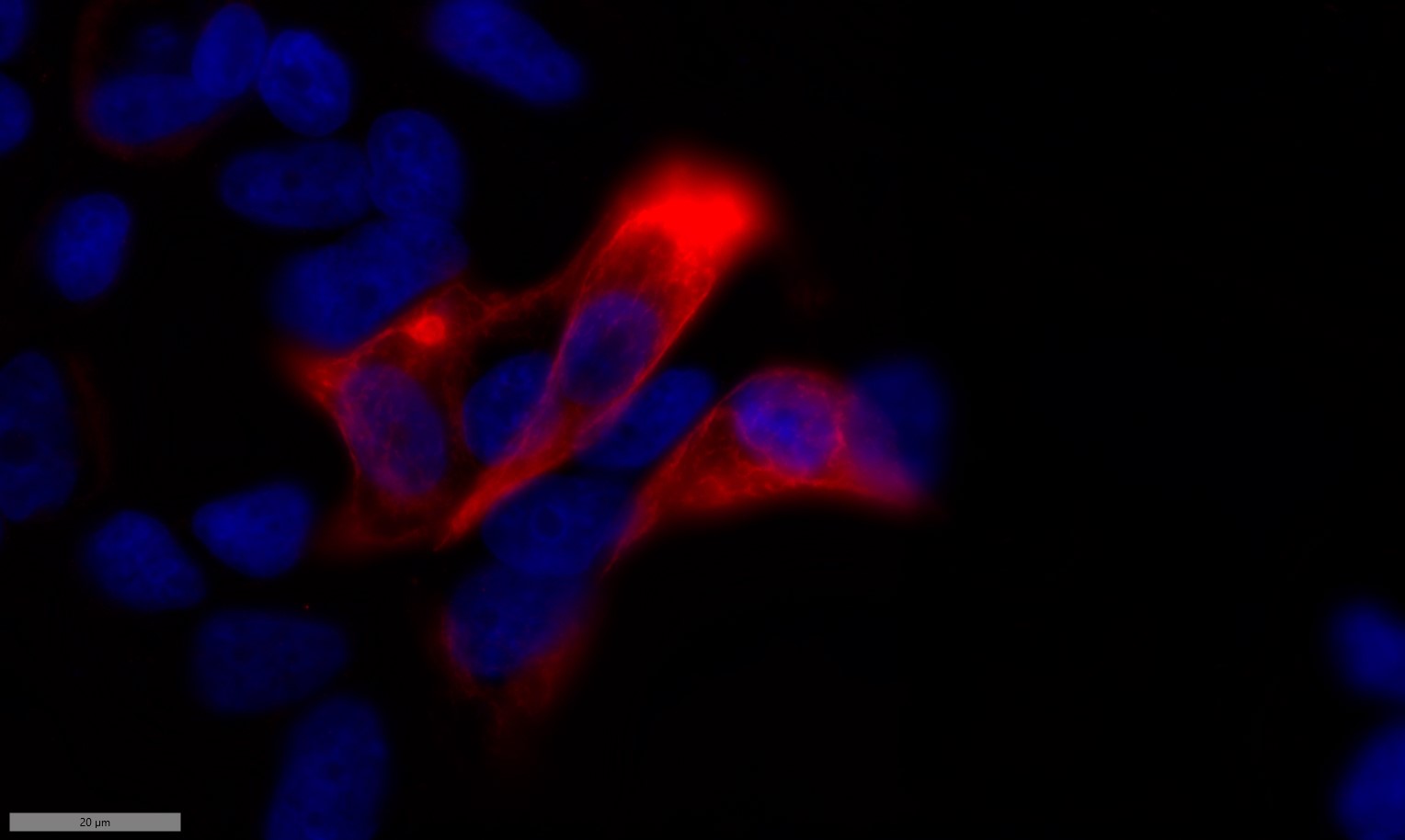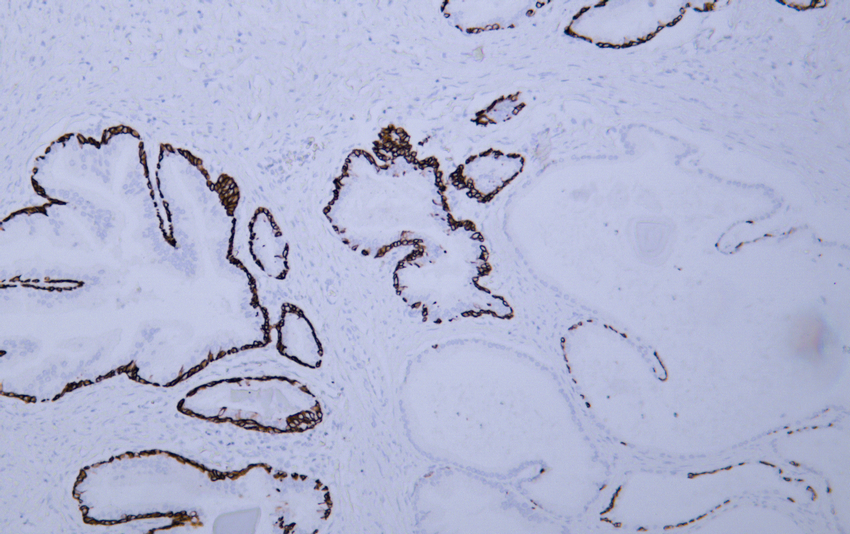Total Cytokeratin 17 Cell-Based Colorimetric ELISA Kit
- Catalog No.:KA3304C
- Applications:ELISA
- Reactivity:Human;Mouse;Rat
- Gene Name:
- KRT17
- Human Gene Id:
- 3872
- Human Swiss Prot No:
- Q04695
- Mouse Swiss Prot No:
- Q9QWL7
- Rat Swiss Prot No:
- Q6IFU8
- Storage Stability:
- 2-8°C/6 months
- Other Name:
- Keratin, type I cytoskeletal 17 (39.1) (Cytokeratin-17) (CK-17) (Keratin-17) (K17)
- Detection Method:
- Colorimetric
- Background:
- disease:Defects in KRT17 are a cause of pachyonychia congenita type 2 (PC2) [MIM:167210]; also known as pachyonychia congenita Jackson-Lawler type. PC2 is an autosomal dominant ectodermal dysplasia characterized by hypertrophic nail dystrophy resulting in onchyogryposis (thickening and increase in curvature of the nail), palmoplantar keratoderma and hyperhidrosis, follicular hyperkeratosis, multiple epidermal cysts, absent/sparse eyebrow and body hair, and by the presence of natal teeth.,disease:Defects in KRT17 are a cause of steatocystoma multiplex (SM) [MIM:184500]. SM is a disease characterized by round or oval cystic tumors widely distributed on the back, anterior trunk, arms, scrotum, and thighs.,disease:KRT16 and KRT17 are coexpressed only in pathological situations such as metaplasias and carcinomas of the uterine cervix and in psoriasis vulgaris.,function:May play a role in the formation and maintenance of various skin appendages, specifically in determining shape and orientation of hair. May be a marker of basal cell differentiation in complex epithelia and therefore indicative of a certain type of epithelial "stem cells". May act as an autoantigen in the immunopathogenesis of psoriasis, with certain peptide regions being a major target for autoreactive T-cells and hence causing their proliferation. Required for the correct growth of hair follicles, in particular for the persistence of the anagen (growth) state. Modulates the function of TNF-alpha in the specific context of hair cycling. Regulates protein synthesis and epithelial cell growth through binding to the adapter protein SFN and by stimulating Akt/mTOR pathway. Involved in tissue repair.,induction:Induced in damaged or stressed epidermis. Induced by the cytokines interferon-gamma (IFN-gamma), tumor necrosis factor alpha (TNF-alpha) and transforming growth factor-alpha (TGF-alpha), and by the potent NF-kappa B inhibitor compounds Bay 11-7082 and Bay 11-7085. Down-regulated by the drug Imatinib.,miscellaneous:There are two types of cytoskeletal and microfibrillar keratin: I (acidic; 40-55 kDa) and II (neutral to basic; 56-70 kDa).,online information:Keratin-17 entry,similarity:Belongs to the intermediate filament family.,subunit:Heterodimer of a type I and a type II keratin. KRT17 associates with KRT6 isomers. Interacts with TRADD and SFN.,tissue specificity:Expressed in the outer root sheath and medulla region of hair follicle specifically from eyebrow and beard, digital pulp, nail matrix and nail bed epithelium, mucosal stratified squamous epithelia and in basal cells of oral epithelium, palmoplantar epidermis and sweat and mammary glands. Also expressed in myoepithelium of prostate, basal layer of urinary bladder, cambial cells of sebaceous gland and in exocervix (at protein level).,
- Function:
- ectoderm development, epidermis development,
- Subcellular Location:
- Cytoplasm .
- Expression:
- Expressed in the outer root sheath and medulla region of hair follicle specifically from eyebrow and beard, digital pulp, nail matrix and nail bed epithelium, mucosal stratified squamous epithelia and in basal cells of oral epithelium, palmoplantar epidermis and sweat and mammary glands. Also expressed in myoepithelium of prostate, basal layer of urinary bladder, cambial cells of sebaceous gland and in exocervix (at protein level).
- June 19-2018
- WESTERN IMMUNOBLOTTING PROTOCOL
- June 19-2018
- IMMUNOHISTOCHEMISTRY-PARAFFIN PROTOCOL
- June 19-2018
- IMMUNOFLUORESCENCE PROTOCOL
- September 08-2020
- FLOW-CYTOMEYRT-PROTOCOL
- May 20-2022
- Cell-Based ELISA│解您多样本WB检测之困扰
- July 13-2018
- CELL-BASED-ELISA-PROTOCOL-FOR-ACETYL-PROTEIN
- July 13-2018
- CELL-BASED-ELISA-PROTOCOL-FOR-PHOSPHO-PROTEIN
- July 13-2018
- Antibody-FAQs


